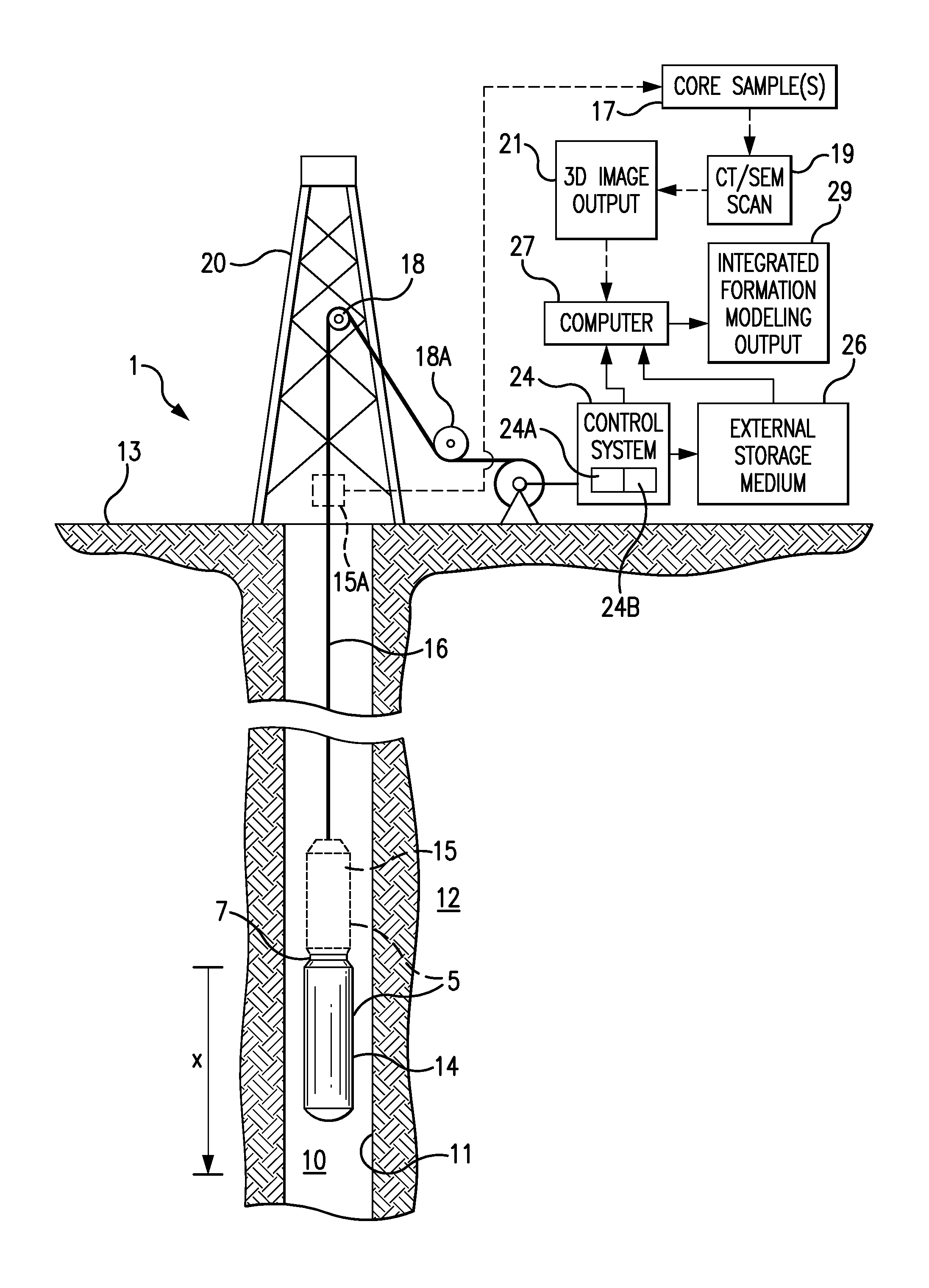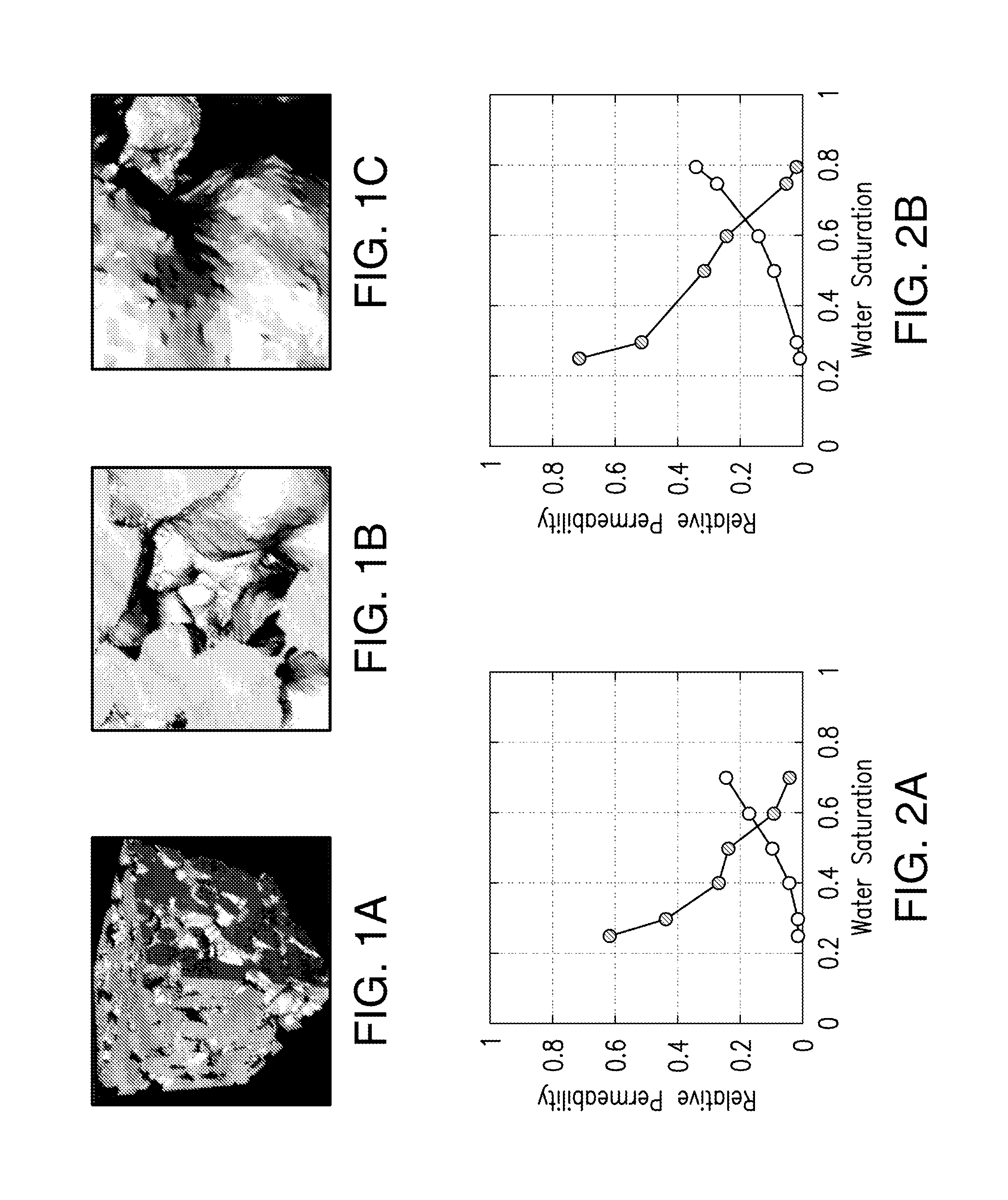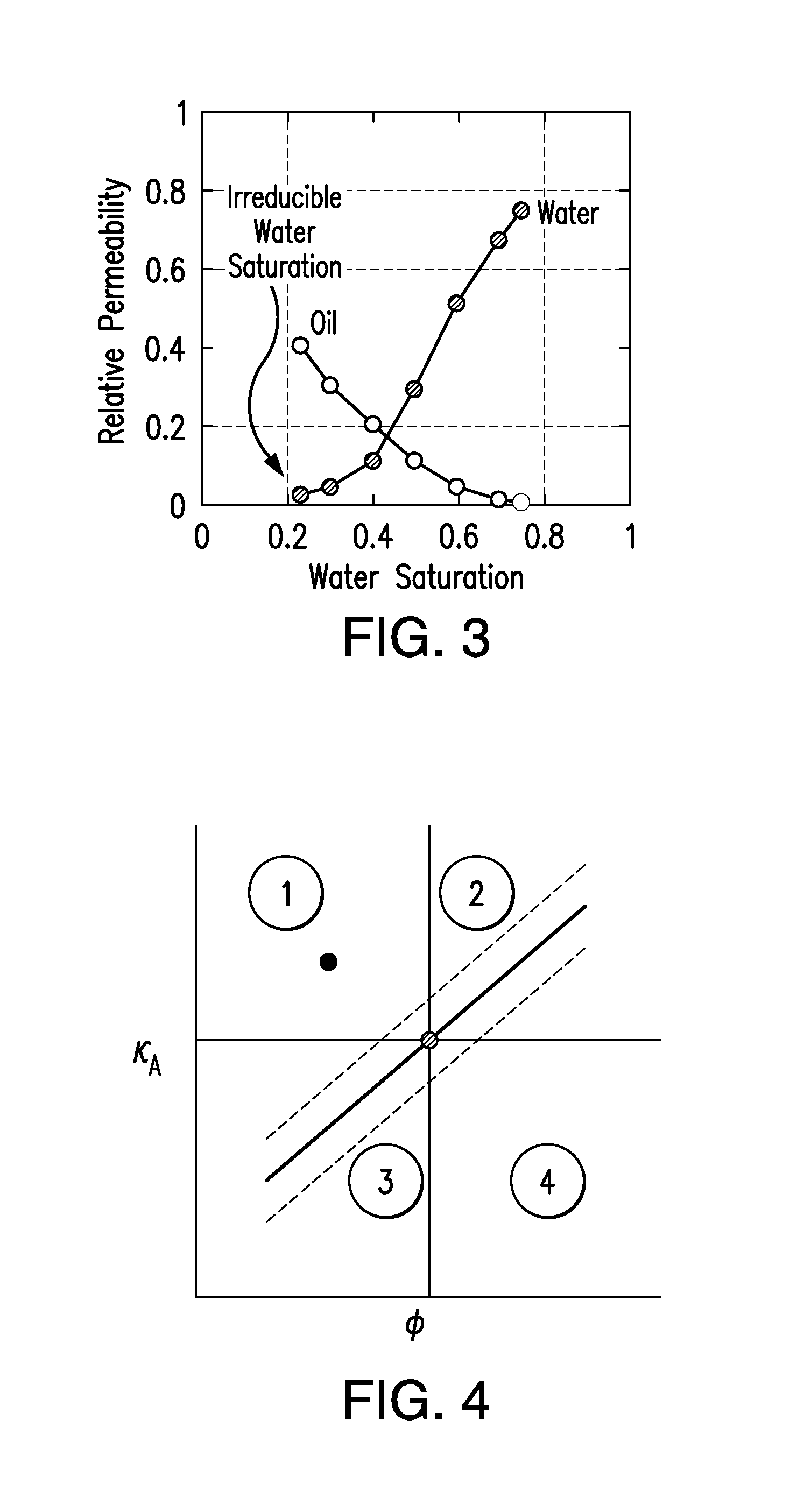Method and system for integrating logging tool data and digital rock physics to estimate rock formation properties
a technology of digital rock physics and tool data, applied in the field of methods and systems for integrating logging tool data and digital rock physics to estimate rock formation properties, can solve the problems of difficult core analysis (scal) for relative permeability and capillary pressure, inability to directly determine permeability, and inability to replace controlled laboratory measurements
- Summary
- Abstract
- Description
- Claims
- Application Information
AI Technical Summary
Benefits of technology
Problems solved by technology
Method used
Image
Examples
example 1
[0223]An example of rebuilding the physical properties of rock of a well interval, such as from core or drill cuttings retrieved from the interval of interest, is the following.
[0224]1. Collect a number of relatively large (˜1 mm) cuttings or core samples from the interval of interest where logging has been conducted or a core extracted.
[0225]2. Produce a CT Image of the cuttings and segment these images.
[0226]3. Bring these images to in-situ conditions.
[0227]4. By sub-sampling the resulting digital volumes, establish rock physics relations (trends, transforms, or models) between velocity, porosity, and mineralogy; permeability, porosity, and mineralogy; electrical formation factor versus porosity and mineralogy; relative permeability and saturation. Theoretically substantiate and expand these models.
[0228]5. Select one or more of parameters measured in the well (e.g., the bulk density and / or elastic-wave velocity) or on the core (the bulk density and electronic number) and then, by...
PUM
 Login to View More
Login to View More Abstract
Description
Claims
Application Information
 Login to View More
Login to View More - R&D
- Intellectual Property
- Life Sciences
- Materials
- Tech Scout
- Unparalleled Data Quality
- Higher Quality Content
- 60% Fewer Hallucinations
Browse by: Latest US Patents, China's latest patents, Technical Efficacy Thesaurus, Application Domain, Technology Topic, Popular Technical Reports.
© 2025 PatSnap. All rights reserved.Legal|Privacy policy|Modern Slavery Act Transparency Statement|Sitemap|About US| Contact US: help@patsnap.com



